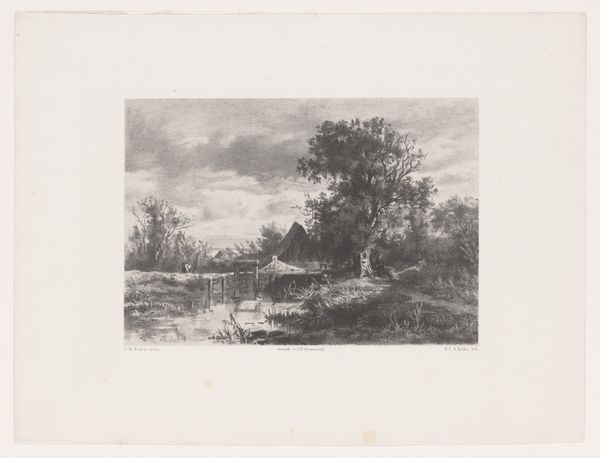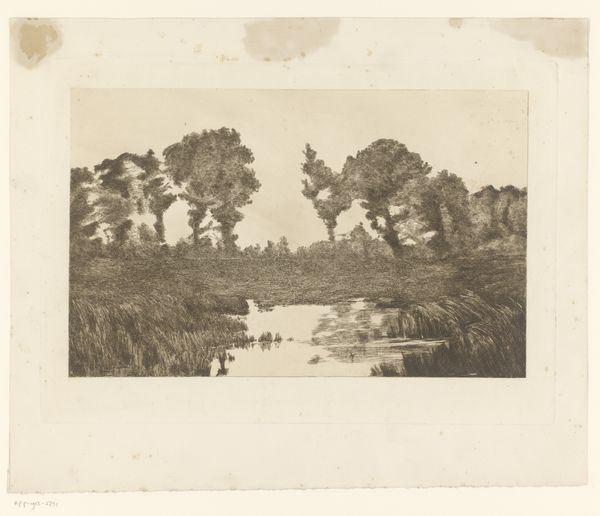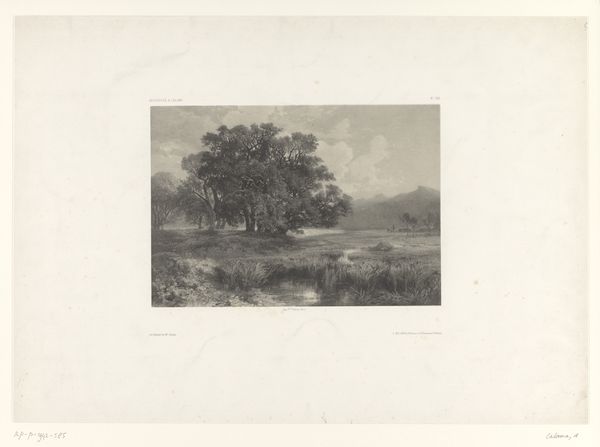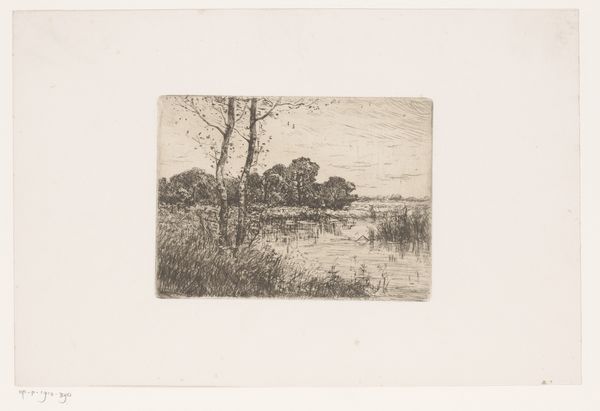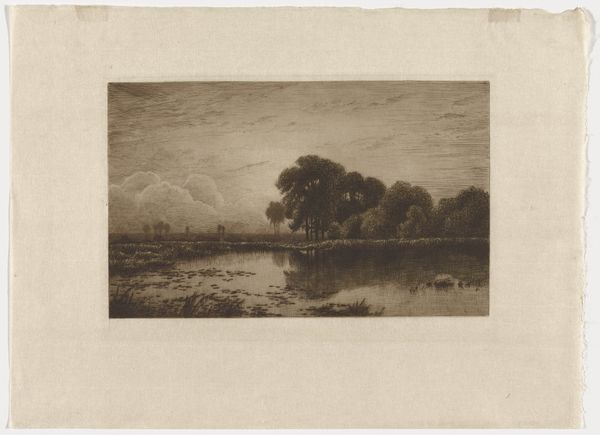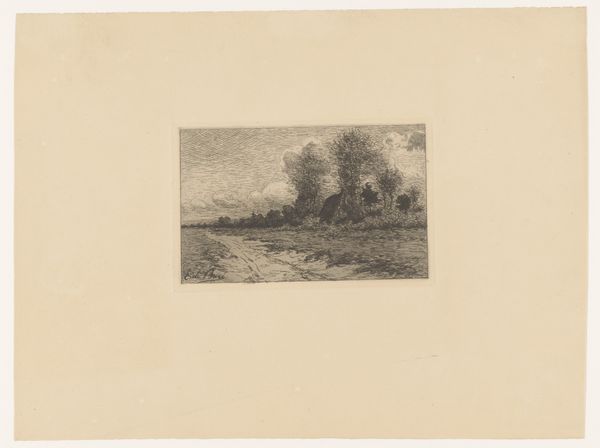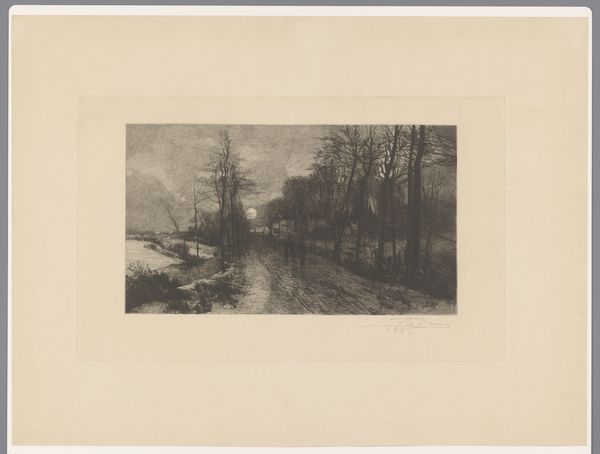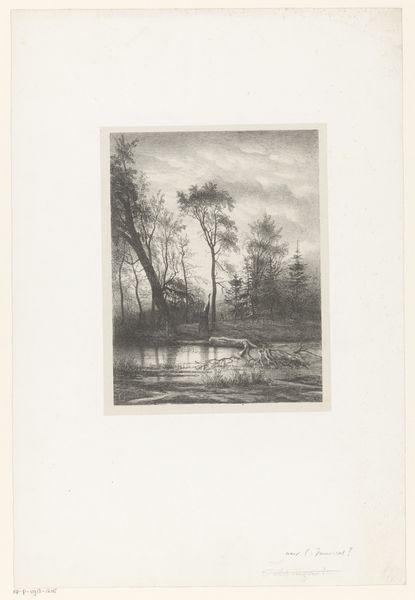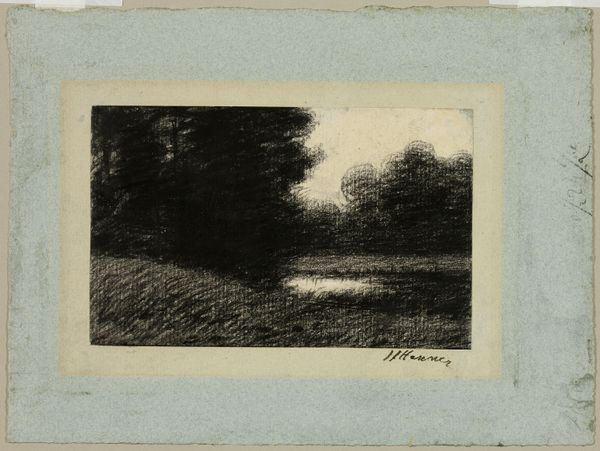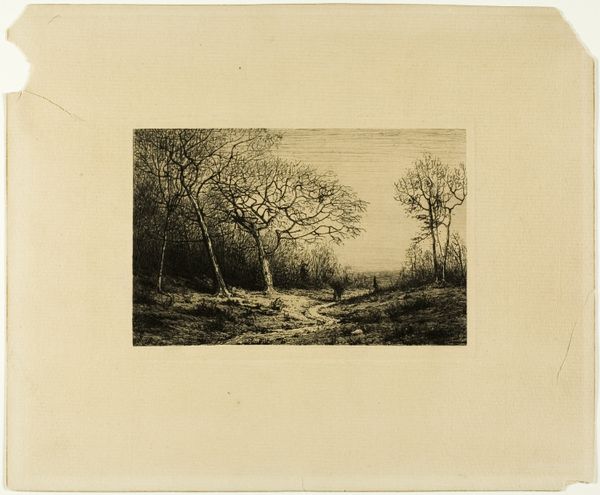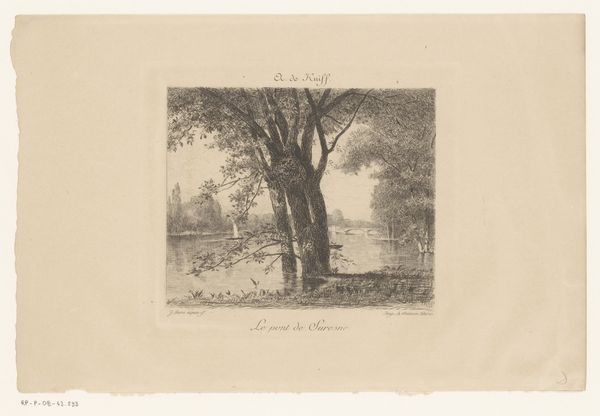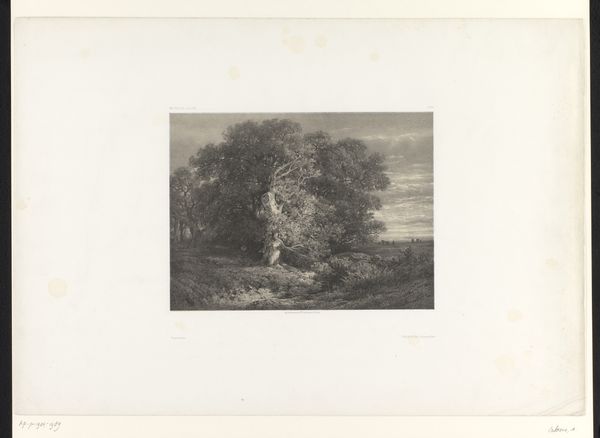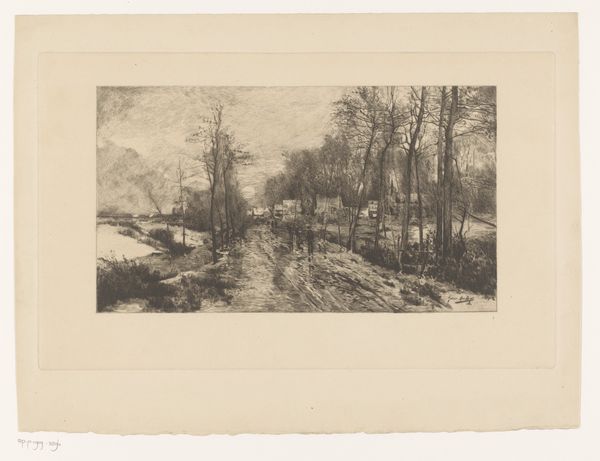
Dimensions: height 283 mm, width 402 mm
Copyright: Rijks Museum: Open Domain
Curator: This is "Landschap met waterplas" which translates to Landscape with Pool, an etching by Henri Rul, likely created between 1872 and 1913. Editor: It's strikingly melancholic. The monochromatic tones and the reflection in the water create an incredibly somber mood, almost ghostly. Curator: That's a great point, its ghostly feeling surely derives from the symbolism around water that runs like a silver vein throughout European art. Water is the source of life but also of danger and mystery. Here, it mirrors the sky, implying perhaps, a world above. Editor: The mirrored sky above reminds me of how this natural landscape gets shaped and reshaped constantly by unseen forces. Consider the shifting cultural meanings assigned to landscapes and ownership. Who benefits from depicting them in certain ways? Who is included in this scenery and who is notably missing? Curator: Interesting questions. Consider too that, in etching, the artist impresses the image onto a plate; there’s a transfer, a translation of vision. The landscape in monochrome here becomes about capturing the *essence* of a place more than a literal record of it, what are the emotional implications of choosing that medium over, say, paint? Editor: Precisely, it brings up questions of authenticity, representation, and the very act of perceiving nature. When an artist chooses a medium that abstracts, it amplifies what messages he communicates about humanity's fraught interactions with its surroundings. This dark romantic impression evokes the darker aspects of our relationship to natural forces, but I still find the artist strangely detached and quiet. Curator: The scene contains so few signs of human presence which makes that tension perhaps more palpable. What does a human encounter here signify? It’s difficult not to think about nature's sublime power or vulnerability given what we now know, especially the environmental dangers around us that were still unseen back then. Editor: It's haunting, how art can so concisely capture historical moods about our inevitable presence upon this land we now occupy together, both past and present. Thank you. Curator: My pleasure. Thank you.
Comments
No comments
Be the first to comment and join the conversation on the ultimate creative platform.
